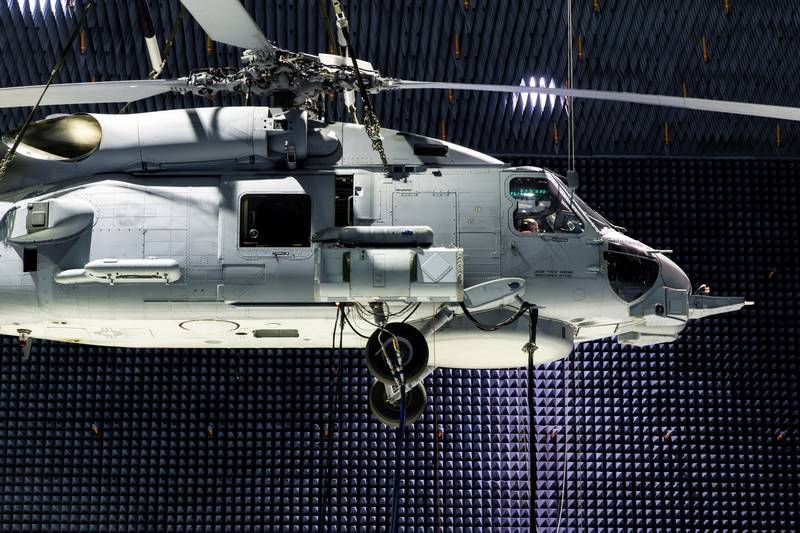NATIONAL HARBOR, Md. — The U.S. Navy selected RTX and L3Harris Technologies to help overhaul the electronic warfare packages aboard its F/A-18 Super Hornet fleet.
Both companies were awarded $80 million prototyping contracts for the Advanced Electronic Warfare effort, or ADVEW, last year, following an initial competition. A final decision for production is expected in 2026.
The Boeing jet’s current jamming-and-sensing systems are piecemeal. The ADVEW endeavor aims to simplify components and incorporate a government-defined open architecture for easier fixes and upgrades. The plug-and-play approach is thought to reduce downtimes as well as overall costs.
“What this really does is it combines electronic attack and support measures into one integrated system,” Jen Lewis, president for advanced combat systems at L3Harris, said in an interview at the Association of Old Crows conference in Maryland. “Today, the F-18 struggles because it’s got a federated system. This takes everything and puts it together, so that the reaction time is much quicker, so that our warfighters are getting the information they need.”
Aircraft must navigate environments packed with radars, missiles and other threats. Penetrating — or zipping past, with the aid of electronic manipulation — is critical.
RELATED

The Navy, alongside other U.S. military services, is pouring money into electronic warfare amid preparations for potential war with Russia and China. Both world powers have built up anti-access and area-denial arsenals meant to keep at bay attackers and restrict battlefield movement. The issue was less pronounced in the Greater Middle East.
Bryan Rosselli, president of advanced products and solutions at RTX business Raytheon, in a statement said the prototyping paves the way for “the next generation” of electronic warfare. The Navy last year identified non-kinetic effects, or attacks that may not be visible to the naked eye but wreak havoc on networks and other digital equipment, as a decider of future conflicts.
“We are completely replacing and consolidating the legacy systems into a one-box solution that will deliver a generational refresh to the electronic warfare capability for the lifetime of the Super Hornet,” Rosselli said.
RTX and L3Harris are among the world’s 10 largest contractors when ranked by defense-related revenue, according to the Defense News Top 100 study. The former earned $39.6 billion in 2022. The latter earned $13.9 billion.
Colin Demarest is a reporter at C4ISRNET, where he covers military networks, cyber and IT. Colin previously covered the Department of Energy and its National Nuclear Security Administration — namely Cold War cleanup and nuclear weapons development — for a daily newspaper in South Carolina. Colin is also an award-winning photographer.
- SEO Powered Content & PR Distribution. Get Amplified Today.
- PlatoData.Network Vertical Generative Ai. Empower Yourself. Access Here.
- PlatoAiStream. Web3 Intelligence. Knowledge Amplified. Access Here.
- PlatoESG. Carbon, CleanTech, Energy, Environment, Solar, Waste Management. Access Here.
- PlatoHealth. Biotech and Clinical Trials Intelligence. Access Here.
- Source: https://www.defensenews.com/electronic-warfare/2024/01/04/rtx-l3harris-to-update-electronic-warfare-kit-on-navys-super-hornets/



